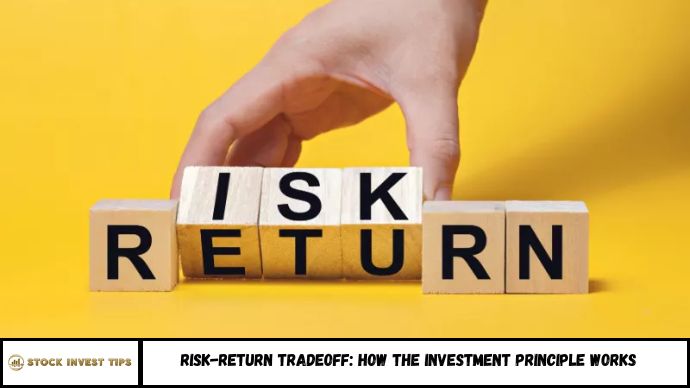The risk-return tradeoff is a core principle in investing—higher returns usually demand higher risks. This article explores how the risk-return relationship works, why it matters, and how investors can make smart decisions to balance risk with potential reward. Learn about real-world examples, risk types, and strategies to align your investments with your financial goals. The risk-return tradeoff states that higher potential profits come only by accepting a greater chance of loss. According to this principle, low risk is typically linked with lower returns, while high risk is associated with the potential for higher returns.
Can You Really Get High Returns Without Risk?
“There’s no reward without risk.” You’ve likely heard that phrase tossed around in financial circles. But what does it truly mean for your investments? Whether you’re a seasoned investor or just starting, understanding how risk relates to return is critical.
This article will break down:
- What the risk-return tradeoff means.
- The types of risk involved.
- How to assess your risk tolerance.
- Strategies to balance risk and reward.
- Real examples and recent data to help you make informed decisions.
Understanding the Risk-Return Tradeoff
What Is the Risk-Return Tradeoff?
The risk-return tradeoff is the idea that higher potential returns come with higher risk. If you want to earn more from your investments, you’ll typically need to accept more uncertainty.
For example:
- Savings Account: Low risk, low return (around 0.5% APY in 2025).
- Stock Market: Higher risk, but historical returns average 7–10% annually.
Why It Matters in Investment Decisions
Balancing risk and return helps you:
- Avoid unnecessary losses.
- Match investments with your financial goals.
- Make informed, emotion-free decisions.
Types of Investment Risk You Should Know
Understanding the forms of risk helps you make smarter decisions. Key types include:
- Market Risk: Risk of loss due to market fluctuations (e.g., stocks).
- Credit Risk: When borrowers fail to repay (common in bonds).
- Liquidity Risk: Inability to quickly sell an asset at fair value.
- Inflation Risk: Erosion of purchasing power over time.
- Interest Rate Risk: Primarily affects bonds as rates rise or fall.
How to Assess and Match Risk to Your Goals
1. Know Your Risk Tolerance
Ask yourself:
- Can I handle seeing my investments drop 20%?
- What’s my time horizon?
- Do I prefer stable returns or am I aiming for growth?
2. Align Investments with Risk Profile
- Conservative: Bonds, high-yield savings, dividend stocks.
- Moderate: Balanced funds, ETFs, blue-chip stocks.
- Aggressive: Tech stocks, crypto, emerging markets.
Real-World Data: Why Risk Often Pays Off
According to Statista (2025):
- The S&P 500 averaged a 10.2% annual return over the last 30 years.
- 10-year U.S. Treasuries, a lower-risk investment, returned about 2.5% annually in the same period.
Although stocks are volatile, they’ve historically outperformed lower-risk assets over time.
Smart Strategies to Balance Risk and Reward
Diversification Is Key
Spread your money across different:
- Asset classes (stocks, bonds, real estate)
- Industries (tech, health, energy)
- Geographic regions
Use Dollar-Cost Averaging
Invest consistently over time to reduce the impact of market fluctuations.
Rebalance Regularly
Adjust your portfolio yearly to maintain your desired risk level.
Common Misconceptions About Risk-Return
- “Higher risk means better return.” Not always. Risk increases potential, not certainty.
- “Low-risk means no risk.” Even cash can lose value to inflation.
- “Young investors should take all risks.” True in part, but strategy still matters.
FAQs
1. What does risk-return tradeoff mean?
It means you must accept higher risk to potentially earn higher investment returns.
2. Is higher risk always better?
No, it increases potential return but also the chance of loss.
3. How can I lower risk without sacrificing returns?
Diversify your portfolio and invest long-term.
4. What is a good risk-return ratio?
A good ratio varies, but many investors aim for at least a 2:1 return-to-risk ratio.
5. Do low-risk investments ever outperform high-risk ones?
Yes, especially in downturns or with steady compounding over time.
6. How do I start balancing risk and return?
Assess your risk tolerance, diversify investments, and invest regularly.
Conclusion
Understanding the risk-return tradeoff helps you avoid impulsive decisions and invest with confidence. While no investment is without risk, the key lies in making informed choices that align with your financial goals and comfort level.
Want to get started? Review your current portfolio or speak to a financial advisor about where you stand on the risk spectrum—and how you can optimize your return.

